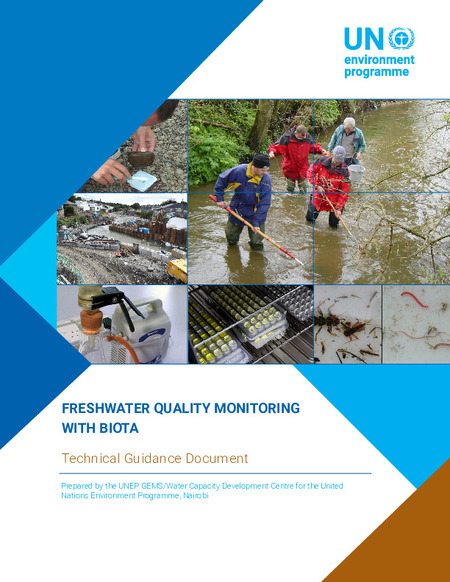Freshwater Quality Monitoring with Biota - Technical Guidance Document

Date
2024-02Author
United Nations Environment Programme
Citation Tool
Bibliographic Managers
RT Generic T1 Freshwater Quality Monitoring with Biota - Technical Guidance Document A1 United Nations Environment Programme YR 2024-02 LK https://wedocs.unep.org/20.500.11822/44817 PB United Nations Environment Programme AB TY - GEN T1 - Freshwater Quality Monitoring with Biota - Technical Guidance Document AU - United Nations Environment Programme Y1 - 2024-02 UR - https://wedocs.unep.org/20.500.11822/44817 PB - United Nations Environment Programme AB - @misc{20.500.11822_44817 author = {United Nations Environment Programme}, title = {Freshwater Quality Monitoring with Biota - Technical Guidance Document}, year = {2024-02}, abstract = {}, url = {https://wedocs.unep.org/20.500.11822/44817} } @misc{20.500.11822_44817 author = {United Nations Environment Programme}, title = {Freshwater Quality Monitoring with Biota - Technical Guidance Document}, year = {2024-02}, abstract = {}, url = {https://wedocs.unep.org/20.500.11822/44817} } TY - GEN T1 - Freshwater Quality Monitoring with Biota - Technical Guidance Document AU - United Nations Environment Programme UR - https://wedocs.unep.org/20.500.11822/44817 PB - United Nations Environment Programme AB -View/Open
Item Statistics
Display item statisticsMetadata
Show full item recordDescription
This technical guidance document is intended for scientists and practitioners who work with freshwaters in the field and in the laboratory but who do not have specialist knowledge of ecology and the use of biota for water quality monitoring. It introduces
some fundamental aspects of freshwater ecosystems and ways in which human activities can affect them. Understanding impacts on biota and ecosystems can guide development and selection of approaches to using freshwater biota to monitor water quality. Successful monitoring with biota depends on using appropriate sampling protocols and related data analysis. Some of the more common approaches suitable for rivers, lakes and reservoirs are described in detail to illustrate their use, together with selected options and examples for analysing data derived from these methods. General data analysis techniques are covered in the companion guidebook in this series which covers data handling and assessment techniques for ambient water quality monitoring data: “Water Quality Data Handling and Assessment”. Although most microbiological monitoring is done to ensure water is safe to drink, it is described briefly here as a tool for determining the presence of faecal contamination in surface and groundwaters. A range of widely-used field sampling methods for the major groups of biota are also illustrated.
Collections
Document Viewer
To read more, scroll down below.

